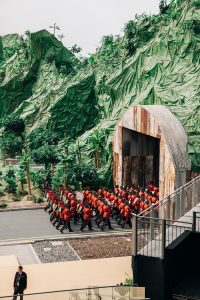Remember my post detailing several prototypes developed at the course of Fashion & Technology at the School of Arts and Communication at Malmö University? There was one project missing, a spectacular luminous dress that pulses according to the rhythm of the music. My over-zealous spam filter had eaten the student’s email. Calle Rosenqvist sent me the info about her Beat Dress again and here’s the gist of our online dialogue:
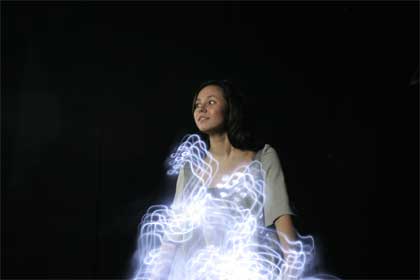 What’s the tech behind all those pulses, sound beats and bursts of light?
What’s the tech behind all those pulses, sound beats and bursts of light?
The dress i sew is sewn in 4 layers of cloth. Underneath it all is a very simple jersey-dress design. On that dress there are 10 detachable patches, all equipped with 10 leds each (a total of 100 leds). From each of these patches there is a wire attached to a battery, which is hidden in a pocket on the very front of the dress. Not only the battery is hidden in this pocket but also a microphone and a small equaliser connected to a small microcomputer (called arduino). On top on all this there is a nylon cloth and also two layers of see through cloth that helps to spread the light from the leds to larger clusters.
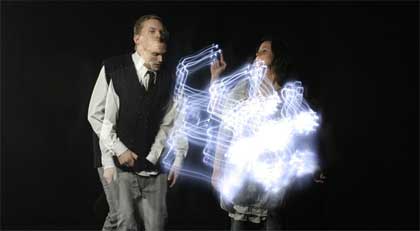 How does it work?
How does it work?
When music or any sound is detected by the microphone it is being led to the equalizer connected to the computer. If there is a base sound the computer transmits a signal to the battery to send pulses of electricity out to the leds in the dress. This obviously lightens the leds up. Then in a second or so they softly go of again. So when listening to music the leds are pulsing to the rhythm of the music. There is also a small lever attached to the microphone, making it possible to adapt to the loudness of sounds around you. This makes the dress work both where there are low volumes like being at home listening to music or out clubbing where the music is very loud.
What was your inspiration/motivation for this project?
When I made the dress I were out clubbing a lot. Finding it dull that so many people weren’t dancing but just hanging around sipping on their beer. I wanted to make a garment that would help to create an atmosphere of dancing and partying even though the wearer wouldn’t dance. Much like something visual such as a discoball or a set of strob-lights helps to give a greater experience of sounds. The garment is of course not only made for people that doesn’t dance, but for all people in the club.
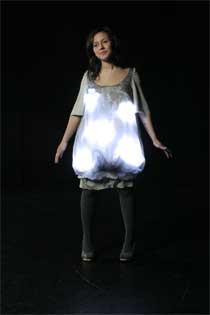
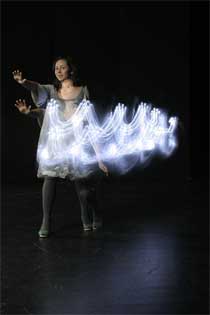 Most challenging step you encountered while working on the dress?
Most challenging step you encountered while working on the dress?
The most challenging part of the task was creating a functioning equalizer out of some electronic devices, and also making the programming of the computer work as I wanted. It was an absolute nightmare! But I got loads of help from Mackie and Marcus two teachers and students of our school.
Thanks Calle!
Photos by Johan Sundell.


